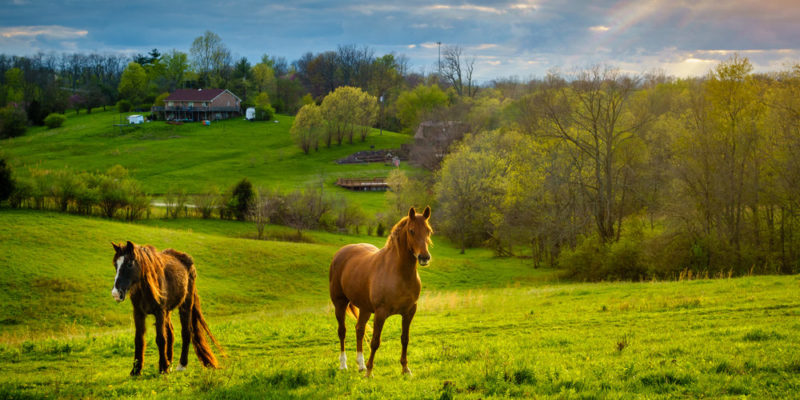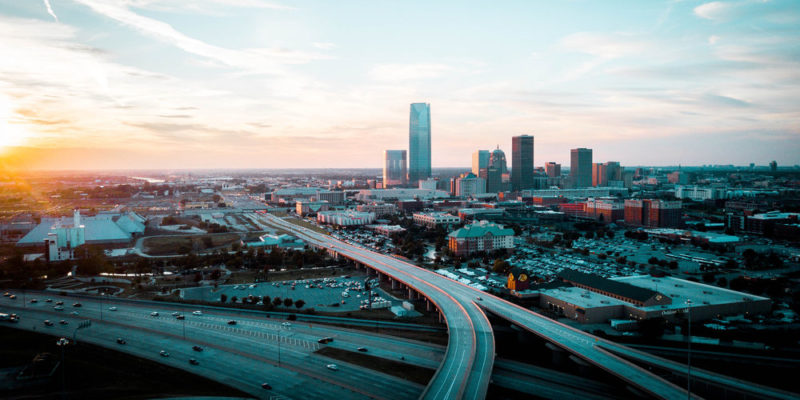We explain what the countryside and the city are, the characteristics of each one and its importance. Also, what are their differences?
What is the country and what is the city?
The countryside and the city are the two main physical spaces in which the population sits and which present great natural, social and economic differences between them that influence the lifestyle of the individuals who inhabit each of these environments.
On the one hand, the field or rural environment is made up of large areas of land that are home to a low number of inhabitants who live in a dispersed way in a natural environment. For their part, cities are settlements made up of a large number of people who live in houses or buildings that are built very close to each other (since land is the rarest asset and, therefore, the most expensive). Cities vary among themselves according to their number of inhabitants, which can be thousands or millions.
In the countryside there is a predominance of primary economic activities , that is, the production of raw materials (such as agriculture and livestock) to supply different industries; tertiary activities predominate in cities, especially those of provision of goods and services. In rural areas there are usually less equipment and services than in cities. Thus, for example, to carry out procedures, to pursue higher education or to obtain more specialized medical assistance, the rural population is forced to move to an urban center.
The words "countryside" and "city" are often used as opposing concepts, although in reality they function as complementary and interdependent elements , since the rural area is responsible for supplying the high demand for agricultural products from the city and the city provides goods and services that the countryside needs.

Characteristics of the country
Some of the main characteristics of rural areas are:
- They have a low population density, which tends to remain stable and can be: dispersed rural areas or nucleated rural areas.
- They can be divided into ranches, farms, farms, among others.
- They are areas in which primary economic activities such as agriculture, livestock, forestry, fishing, beekeeping and the raising of animals such as chickens are carried out. This production can be used for self-consumption or to supply a large number of the population.
- They have part of their territory cultivated or with grazing areas.
- There are few buildings.
- A natural environment predominates, with native flora and fauna.
- They have low levels of environmental pollution , visual and sound .
- They usually have a nearby town or city where trade and service activities are carried out .
- Its population tends to have access to education in rural schools.
- Its population is in contact with nature and has a less sedentary lifestyle than in cities, due to the development of primary activities and the lack of means of transport.
- They have their own culture and traditions shared by the entire rural community.
- They have more limited areas of socialization.
- The distances between towns are usually large and they do not have a highly developed transport service that connects all points.

Characteristics of the city
There are different types of cities that vary among themselves, mainly due to their population density. Different countries establish their criteria to determine when a settlement is considered a city.Some of the characteristics that most cities share are :
- They have a high level of population density that is growing rapidly.
- Its population lives in buildings or houses that are built in a limited physical space.
- They have high levels of environmental, visual and sound pollution.
- They offer a lifestyle that is recognized as unhealthy, due to factors such as stress and permanent exposure to environmental pollutants.
- They are a great tourist attraction.
- They are centers of artistic and cultural development with cinema , music and theater offers .
- They have a wide commercial development, with stores that offer different types of products and for different areas
- They have a varied gastronomic offer, with bars and restaurants.
- They have important health and educational centers.
- They have a varied job offer with opportunities in many areas.
- They have facilities that contribute to human interaction and the social life of their populations.
- They have developed transport services (such as buses, trains, subways and taxis) that connect all points of the city.
- They have a landscape in which concrete and steel constructions, asphalt and green areas predominate. Some of the constructions are: homes, hospitals, schools, public offices, shopping centers, among others.
- They have a constant flow of people, which makes them heterogeneous and cosmopolitan places.
- They offer a higher cost of living than in rural areas.
- They can harbor great inequality among their population, which can be caused by the mismanagement of resources that prevents all inhabitants from accessing basic needs .

Differences between the country and the city
Some of the main differences between cities and the rural environment are:
- Population . The city has a very high average of inhabitants per km², while in the countryside there are small settlements or houses scattered throughout a wide area of territory.
- Landscape . The city has an artificial landscape generated by the human being in which cement constructions and asphalt streets prevail. In the countryside the landscape has not undergone many modifications and is characterized by being a natural environment.
- Infrastructure . The city has a great building and infrastructure development that allows the coexistence of various types of activities and industries. The field, for its part, has the necessary infrastructure for the development of the activities of that area and with houses in which the inhabitants of the rural community live.
- Economic activity . The city functions as a center to carry out various economic activities related to services and the production of goods from raw materials. In the field, primary activities related to obtaining materials from natural resources or from animals and plants are carried out.
- Transportation . The city is usually connected through a wide transport network in which various means intervene such as the train, the car, the bicycle, the subway and the motorcycles. On the other hand, in the field the distances are long and vehicles such as trucks are usually used to transport materials, and others suitable for circulating on stone or dirt roads. In addition, means of transport with blood traction are used, such as the horse .
- Services . The city has a wide range of services, which can be basic, such as education or health, or others such as gastronomy, entertainment, courier services, hairdressers, supermarkets, among many others. In the rural area there are small settlements that provide some basic services but, on occasions, their inhabitants have to move to the city to, for example, carry out a medical intervention or study at university.
- Employment . The city has a great economic development , so the job offer is wide and varied. On the other hand, in the field the works revolve around the activities of rural areas.
- Lifestyle . The city has a fast pace that, in many cases, threatens communication and harmony among its members and can generate imbalances, stress and anguish. The countryside, for its part, has a rhythm of life that is more connected to the natural environment, so its inhabitants tend to have a more leisurely life.
- Growth and development . The city is experiencing a dynamics of dizzying transformation, because the population is growing rapidly, which creates urgent needs in terms of housing and employment. In the countryside this is not perceived, because the population tends to remain stable.
Importance of the countryside and the city
The countryside and the city are places where the population lives and they are structures that coexist and complement each other.
The importance of the field lies in its role as a producer of many of the raw materials that feed a large portion of the world's population. Through primary activities, the field obtains from nature the resources that are the basis for both the food industry and the textile, pharmaceutical and construction industries, among many others.
The field is usually fundamental in the economies of developing countries in which economic growth depends fundamentally on the export of raw materials such as grains.
For its part, the city, by nurturing a large number of people in the same physical space, allows fundamental links and relationships to be generated, both in the economic, social and cultural spheres. The city carries out the artistic, cultural, religious, business and sports life of a society and is home to schools, churches, universities and health centers, which allows the population access to their main needs .
More than half of the world's population lives in cities, which is based both in large cities (the most populated cities in the world exceed 20 million inhabitants) and in medium-sized cities or others with a few thousand inhabitants.
Cities are also a source of history, which is why many of them became important tourist destinations.
The above content published at Collaborative Research Group is for informational and educational purposes only and has been developed by referring reliable sources and recommendations from experts. We do not have any contact with official entities nor do we intend to replace the information that they emit.
Luke is passionate about fostering student involvement and connection. He studied psychology for his major and likes learning about the past. Luke aims to specialize in artificial intelligence and cybersecurity. .
Leave a reply
Your email address will not be published. Required fields are marked *Recent post

Sport: What Is It, Types, Risks, Features, Characteristics and Examples

Dogs: Emergence, Features, Characteristics, Feeding and Breeds

Story: Definition, Elements, Structure, Features and Characteristics

